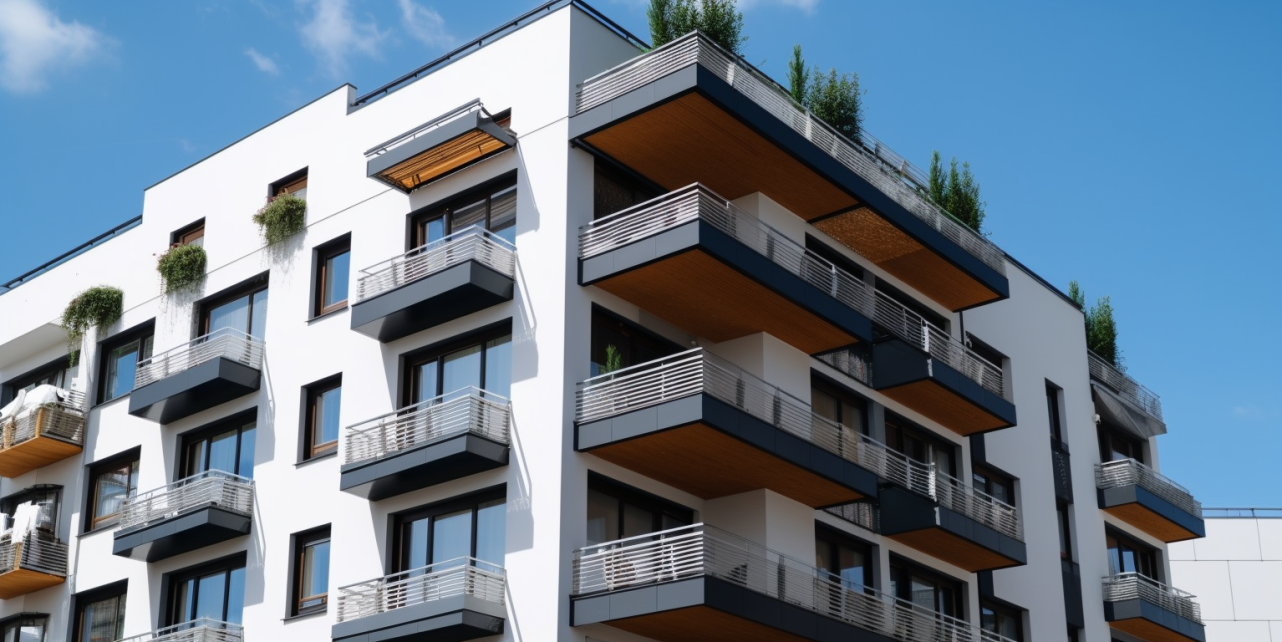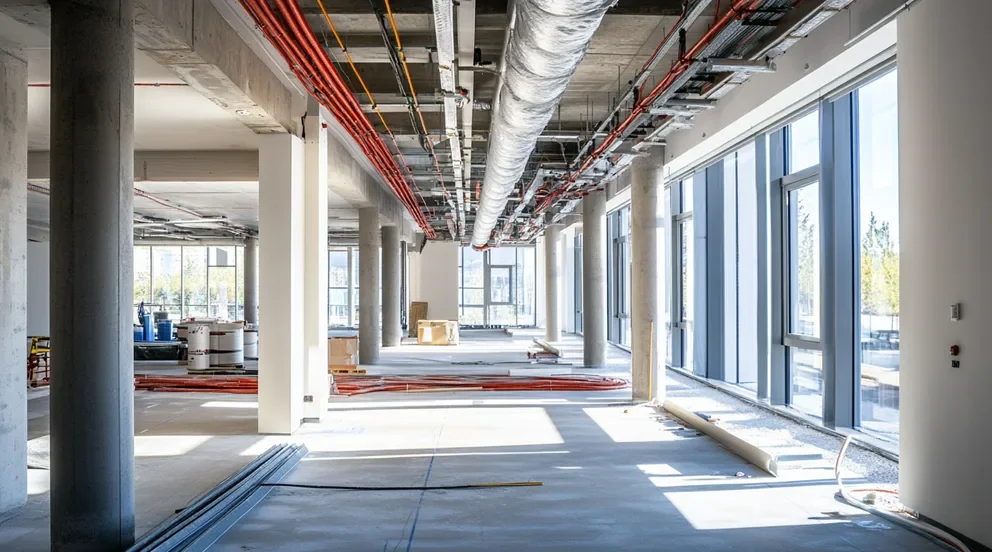How much an apartment building cost varies depending on its size, condition, and location. Generally, a standard building will cost between $200 and $400 per square foot, with a range of extensions that can increase the cost of the building. Factors such as size, location, accessibility, local regulations, and even municipal taxes can affect the total cost.
The total cost of an apartment building will also depend on the number and type of units within it. Size also plays a major role in the cost. A large building with many units will cost more than a smaller building with fewer units. The condition of the building also affects cost; older buildings often cost more to renovate and modernize, while newer buildings are often cheaper to purchase.
Other costs associated with purchasing an apartment building include closing costs, plumbing, electrical installation, paperwork, and security. Lastly, the amount of rent being paid per unit can affect the purchase price. If the rent payments are higher, then the building is likely to cost more.
In conclusion, the cost of an apartment building depends on multiple factors such as size, condition, location, the number of units, rent, and other costs associated with the sale. The cost of an apartment building can range from $200 to $400 per square foot or more.
Factors That Impact the Cost of an Apartment Building
The cost of an apartment building is impacted by several factors such as size, location, condition, the number of units, and rent. Generally, the cost for a standard building will range from $200 to $400 per square foot. Additional costs including closing fees, plumbing, electrical installation, paperwork, and security can raise the total cost. Older buildings often cost more to update, while newer buildings tend to be cheaper to purchase. Lastly, higher rent payments per unit can also increase the purchase price.
Comparing the Cost of Smaller and Larger Buildings
The cost of an apartment building depends on several factors such as size, location, condition, the number of units, and rent. Generally, a standard building will range from $200 to $400 per square foot. Smaller buildings with fewer units tend to be cheaper than larger buildings with many units. Furthermore, older buildings require more renovation costs while newer buildings may be more cost-efficient. Lastly, if rent payments are higher, then the cost of the building is likely to be higher.
Additional Costs Associated With Buying an Apartment Building
When buying an apartment building, there are several additional costs to consider, including closing costs, plumbing, electrical installation, paperwork, and security. Furthermore, rent payments per unit can also have an effect on the total cost. Therefore, it is important to factor in all of these costs before committing to a purchase.
Effect of Rent on the Cost of an Apartment Building
The rent payments per unit within an apartment building can have a large impact on the total cost of the building. Generally, buildings with higher rent payments are more expensive to purchase due to the possibility of increased revenue. As a result, it is important to take into consideration rental costs before committing to a purchase.
Local Regulations Affecting the Cost of an Apartment Building
The cost of an apartment building is affected by several factors, including local regulations. Generally, buildings in areas with more stringent regulations, such as energy efficiency, housing codes, and zoning laws, tend to be more expensive due to the associated costs of meeting these regulations. Additionally, buildings with higher rent payments tend to be more expensive as well. Therefore, it is important to consider local regulations when determining the cost of an apartment building.
Cost Variants in Various Locations for an Apartment Building
When purchasing an apartment building, the cost is impacted by several factors such as size, condition, location, the number of units, and rent. Generally, the price for a standard building can range from $200 to $400 per square foot. However, this cost may differ depending on the building’s location. For example, buildings in areas with more stringent regulations, such as energy efficiency, housing codes, and zoning laws, may be more expensive due to the added costs of meeting these standards. Additionally, buildings in more popular areas, with access to amenities and public transportation, may also be more expensive due to higher rent payments and demand. Thus, it is important to factor in the location of the building when determining the overall cost.
Cost of Renovating an Older Apartment Building
The cost of renovating an older apartment building will depend on factors such as its size, condition, location, and the type of renovations needed. Generally, the cost of renovating a building ranges from $100 to $400 per square foot. Factors such as size, local regulations, and municipal taxes can further affect the total cost of the renovation. Additionally, more extensive renovations, such as updating plumbing, electrical, and security systems, can increase the cost even more. It is important to factor in these costs before committing to a renovation project.
Tax Implications When Looking to Purchase an Apartment Building
When looking to purchase an apartment building, there are several tax implications to consider. Unless the purchase is being made as a personal residence, it is typically subject to income taxes and sales taxes, which can add to the overall cost. Additionally, the depreciation of the building and any related deductions can provide tax benefits. Furthermore, any rent payments received from tenants are taxable and should be reported as income. As such, it is important to consult with a tax professional to ensure proper compliance and understanding of the tax implications when looking to purchase an apartment building.
Accessibility Features That Can Raise the Cost of an Apartment Building
Accessibility features in an apartment building can add to the overall cost. These features can include wider hallways, ramps, elevators, and wider doors. Additionally, more advanced features such as automatic doors, motion sensor lighting, and hearing loops can all raise the cost of the building. Furthermore, certain regulations, such as the Americans with Disabilities Act (ADA), may require such accessibility features, thus further increasing the cost. It is important to consider these costs when budgeting for the purchase of an apartment building.
Return on Investment When Buying an Apartment Building
Buying an apartment building is a major investment, and potential buyers should consider the return on investment. Generally, the returns can be expected to range between 2-3% of the purchase price. However, depending on factors such as size, location, the number of units, and rent, the return can vary. Additionally, other costs associated with purchasing an apartment building, such as closing costs, plumbing, electrical installation, paperwork, and security, can have an effect on the return. Therefore, it is important to factor in all costs before committing to a purchase in order to maximize the return on investment.
Key Takeaways
When looking to purchase an apartment building, it is important to consider several key factors. The size, condition, location, and number of units can all have an effect on the cost of the building, with larger buildings and those in better locations typically costing more. Additional costs, such as closing costs, plumbing, electrical installation, paperwork, and security, need to be factored in as well. Furthermore, rent payments per unit can also influence the purchase price. Additionally, local regulations, such as energy efficiency, housing codes, and zoning laws, can also have an impact on the cost. Lastly, tax implications and the potential return on investment should be considered before committing to a purchase.



